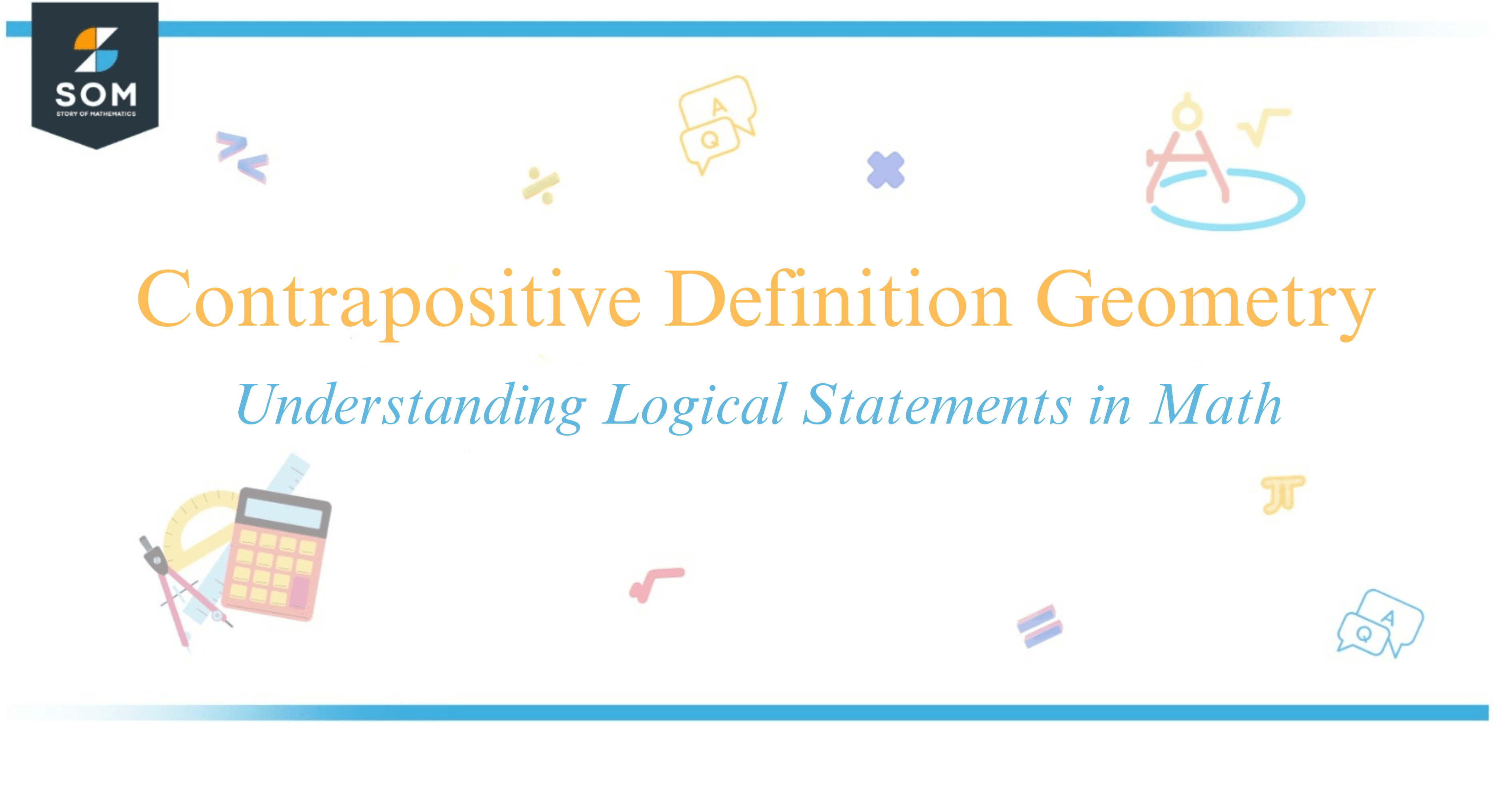
The contrapositive in geometry is a logical relationship between statements that plays a crucial role in proofs and reasoning.
In essence, for any given conditional statement “If ( p ), then ( q )”, the contrapositive is expressed as “If not ( q ), then not ( p )”.
This forms the foundation for establishing the validity of statements within the realm of geometry, where logical consistency is key.
This concept is not only pivotal for theoretical aspects but is also practical in geometric proofs, where establishing the truth of a converse by demonstrating the contrapositive can be an effective strategy.
I hope you feel the same excitement I do diving into the logical nuances that shape our understanding of geometry.
What is the Contrapositive Definition in Geometry
In geometry, the concept of contrapositive takes a significant role in the realm of logic and proofs.

When considering conditional statements, which often come in the form of “if-then” clauses, understanding the contrapositive is crucial.
Let’s dissect a conditional statement. It typically has the form “If $p$, then $q$,” represented as $p \rightarrow q$.
The contrapositive of this statement switches and negates both the hypothesis and the conclusion, resulting in “If not $q$, then not $p$,” which is denoted as $\neg q \rightarrow \neg p$. It’s a common misconception that contrapositive is complex, but with practice, one can easily grasp its usage.
Contrapositives hold a unique characteristic: they always share the same truth value as the original conditional statement. This means if the original statement is true, so is the contrapositive, and vice versa, making them logically equivalent.
This property is frequently used in mathematical theorems and their proofs, serving as a fundamental tool for mathematicians.
Unlike the contrapositive, the converse (If $q$, then $p$) or the inverse (If not $p$, then not $q$) might not necessarily have the same truth value as the original statement, making them less reliable in proof logic.
Here’s a table to summarize the relationships:
| Statement Type | Format |
|---|---|
| Conditional | $p \rightarrow q$ |
| Contrapositive | $\neg q \rightarrow \neg p$ |
| Converse | $q \rightarrow p$ |
| Inverse | $\neg p \rightarrow \neg q$ |
Understanding and identifying these equivalences are part of my approach to ensure content accuracy and improve the practice preview in my teachings. Moreover, applying this knowledge enhances both logic skills and mathematical rigor.
Geometry and Conditional Statements
In my study of geometry, I often encounter various conditional statements that serve as the building blocks for formulating theorems and proofs.
These conditionals are expressed in the form “if p, then q,” denoted as $p \rightarrow q$. They are essential for understanding how different geometric concepts relate to each other.
For instance, consider a statement involving congruent angles: If two angles are congruent, then they have the same measure. This can be written as $ \angle A \cong \angle B \rightarrow m\angle A = m\angle B$, where $m\angle $ represents the measure of an angle.
To craft proofs, I also make use of other forms of statements derived from the original conditional, such as its contrapositive, which swaps and negates both the hypothesis and the conclusion and is logically equivalent to the original statement.
The contrapositive is expressed as $\sim q \rightarrow \sim p$ or, in the context of our previous example, $m\angle A \neq m\angle B \rightarrow \angle A \ncong \angle B $.
| Statement | Example |
|---|---|
| Conditional | $ \angle A \cong \angle B \rightarrow m\angle A = m\angle B $ |
| Contrapositive | $ m\angle A \neq m\angle B \rightarrow \angle A \ncong \angle B$ |
While exploring biconditional statements, I learned they are true if and only if both the original condition and its converse are true.
They are denoted as ( p \leftrightarrow q ) and in our angle scenario, it reads as: two angles are congruent if and only if they have the same measure, written as ( \angle A \cong \angle B \leftrightarrow m\angle A = m\angle B ).
Truth tables become a reliable tool in evaluating the validity of these statements. They exhaustively list all possible truth values that the hypothesis and conclusion can have, and what the resulting truth value of the statement would be.
Understanding these relationships is crucial to my journey in geometry, as they aid me in deducing properties about figures like quadrilaterals and forming robust proofs about their characteristics.
Conclusion
In exploring the concept of the contrapositive in geometry, I’ve delved into the logical framework that supports mathematical reasoning.
A contrapositive rephrases a conditional statement by reversing and negating both the hypothesis and the conclusion. This form preserves the truth value. If the original conditional is $p \rightarrow q$, the contrapositive is $\neg q \rightarrow \neg p$, signifying that if $q$ is false, then $p$ must also be false.
This fundamental aspect of logic ensures that if the original statement is true, so is the contrapositive. Unveiling this equivalence is a powerful tool in proofs and problem-solving.
For instance, when I come across complex geometric proofs, understanding that the contrapositive of a given conditional is true if the original condition is true can provide alternate pathways to a solution.
In geometry, grasping the contrapositive, along with its counterparts—the converse and the inverse, sharpens my ability to dissect and understand statements, and provides a strong foundation for constructing and validating geometric arguments.
Armed with this knowledge, I’m well-equipped to tackle the logical structure of geometrical statements and their implications rigorously and clearly.
